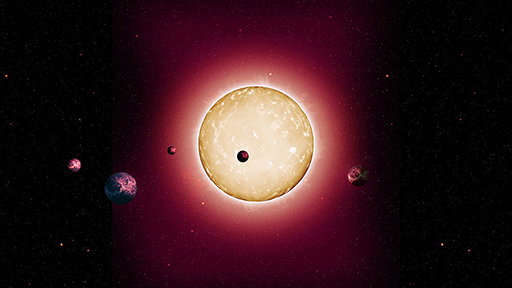3.2 The Kepler-444 planetary system
In 2015, astronomers found a system of five transiting planets orbiting the star Kepler-444. Finding five new planets orbiting the same star is exciting, but what is most intriguing about this planetary system is the age of the star: it has been deduced to be 11.2 billion years old. This means Kepler-444 formed when the Universe was young. The planets orbiting this ancient star are small, similar in size to the terrestrial planets in our own Solar System. Kepler-444 probably hosts a system of five rocky planets!
To find terrestrial-sized planets orbiting such an ancient star suggests that rocky planet formation began early in the Universe’s history. How might this be possible? Well, researchers suggest that rocky planet formation requires less chemical enrichment than previously thought, less than is needed for gas giants. Habitats similar to the early Earth may have been present in the Universe for much of its 14-billion-year history! This presents the possibility of ancient life in the Galaxy.

